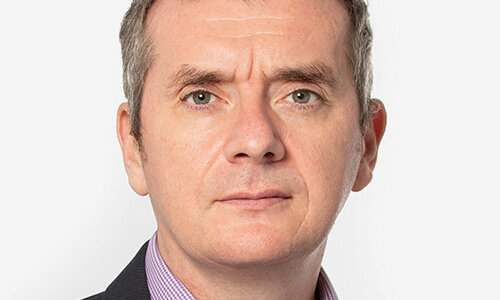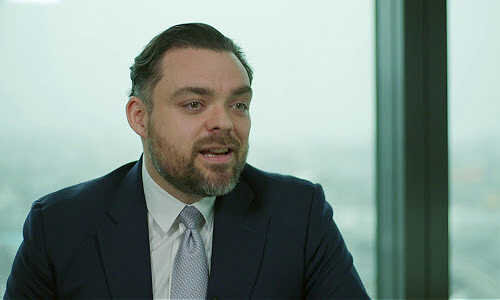The Swiss asset manager is attempting a turnaround after discouraging potential suitors. GAM needs to stanch the outflows in its flagship unit, where a heavy reliance on a single star fund manager is a sword of Damocles.
The Zurich-based asset manager's future still hangs in the balance, two years after institutional investors headed for the doors when a scandal around a bond fund blew open. Much now rests on the shoulders of Paul McNamara (pictured below), a well-known fund manager in emerging market credit and currencies.
McNamara's significance to GAM is apparent in the company's assets: roughly half its actively managed money are in fixed income strategies. Of that, McNamara – a former British government economist as well as lecturer – manages about one-third, or $4.5 billion, according to data from Morningstar.
Stanching The Wound
GAM would never admit this reliance: besides notable exits following the 2018 scandal, the firm has disclosed a series of new hires, like Anthony Giret for its primary credit fund, or Jupiter's Jill Barber, who recently began overseeing institutional business. The company also points to other fund managers including Mark Hawtin, Thomas Funk, and Nial Gallagher, who are pulling in new money.
GAM's investment management unit traditionally operated as a series of boutiques run by big-name managers like Tim Haywood. Clients decided more on an allocation, style and manager than on a specific provider.

McNamara, who joined GAM's predecessor in 1997, is considered a top bond talent who doubtless has countless offers to defect. If he did so – there is no indication of this –billions in assets would leave with him.
Asset bleeding remains GAM's big issue, and the company hasn't been able to stop them for nine consecutive quarters. Investment management shed 2.4 billion Swiss francs in the third quarter, narrowing the unit's assets to 34 billion francs. GAM managed more than 84 billion francs before suspending Haywood, following a whistleblowing.
Stable Inflows, Thin Margins
Overall, GAM still manages 120 billion, but its private label arm is what is fueling the growth. The unit's margins are extremely thin compared to investment management, where GAM pulls in north of 50 basis points on assets. As a result, the private label unit's roughly 30 million francs in first-half revenue can't match up with investment management, which hauled in roughly 90 million francs.
Another key risk for the active unit is that GAM is heavily reliant on two key long-standing partnerships: Atlanticomnium, a Geneva-based credit specialist, as well as Fermat Capital, a U.S. alternative asset manager specialized in catastrophe bonds. The two partners manage a double-digit billion sum on behalf of GAM – roughly half of the investment management total.
Countering With Cuts
CEO Peter Sanderson (pictured below) has made considerable progress deepening cost cuts, but the ex-Blackrock executive hasn't yet stanched the asset bleed, which is heading into its tenth consecutive quarter.

Given the dwindling revenue, Sanderson will not be able to keep cutting costs to preserve profits though. GAM's more than 700 staff is still bloated for its 33 billion francs in assets. By comparison, Zurich-based Fisch manages just over 10 billion francs, with less than 100 employees.
Asset Sale to Invesco
GAM's recently-clinched sale a real estate debt fund to Invesco – including a seven-person team led by Andrew Gordon managing $300 million – illustrates the company's need to get at cash. When GAM bought the business five years ago under then-CEO Alex Friedman, it had managed $1.2 billion.
The asset manager's investors appear to have lost hope of a turnaround: the stock has shed nearly two-thirds of its value since Sanderson was named CEO. So far this year, shares have edged 50 percent lower.
Reporting by Katharina Bart and Peter Hody


































